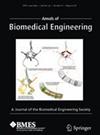On-field Head Acceleration Exposure Measurements Using Instrumented Mouthguards: Multi-stage Screening to Optimize Data Quality
Abstract
Instrumented mouthguards (iMGs) are widely applied to measure head acceleration event (HAE) exposure in sports. Despite laboratory validation, on-field factors including potential sensor skull-decoupling and spurious recordings limit data accuracy. Video analysis can provide complementary information to verify sensor data but lacks quantitative kinematics reference information and suffers from subjectivity. The purpose of this study was to develop a rigorous multi-stage screening procedure, combining iMG and video as independent measurements, aimed at improving the quality of on-field HAE exposure measurements. We deployed iMGs and gathered video recordings in a complete university men’s ice hockey varsity season. We developed a four-stage process that involves independent video and sensor data collection (Stage I), general screening (Stage II), cross verification (Stage III), and coupling verification (Stage IV). Stage I yielded 24,596 iMG acceleration events (AEs) and 17,098 potential video HAEs from all games. Approximately 2.5% of iMG AEs were categorized as cross-verified and coupled iMG HAEs after Stage IV, and less than 1/5 of confirmed or probable video HAEs were cross-verified with iMG data during stage III. From Stage I to IV, we observed lower peak kinematics (median peak linear acceleration from 36.0 to 10.9 g; median peak angular acceleration from 3922 to 942 rad/s2) and reduced high-frequency signals, indicative of potential reduction in kinematic noise. Our study proposes a rigorous process for on-field data screening and provides quantitative evidence of data quality improvements using this process. Ensuring data quality is critical in further investigation of potential brain injury risk using HAE exposure data.


 求助内容:
求助内容: 应助结果提醒方式:
应助结果提醒方式:


